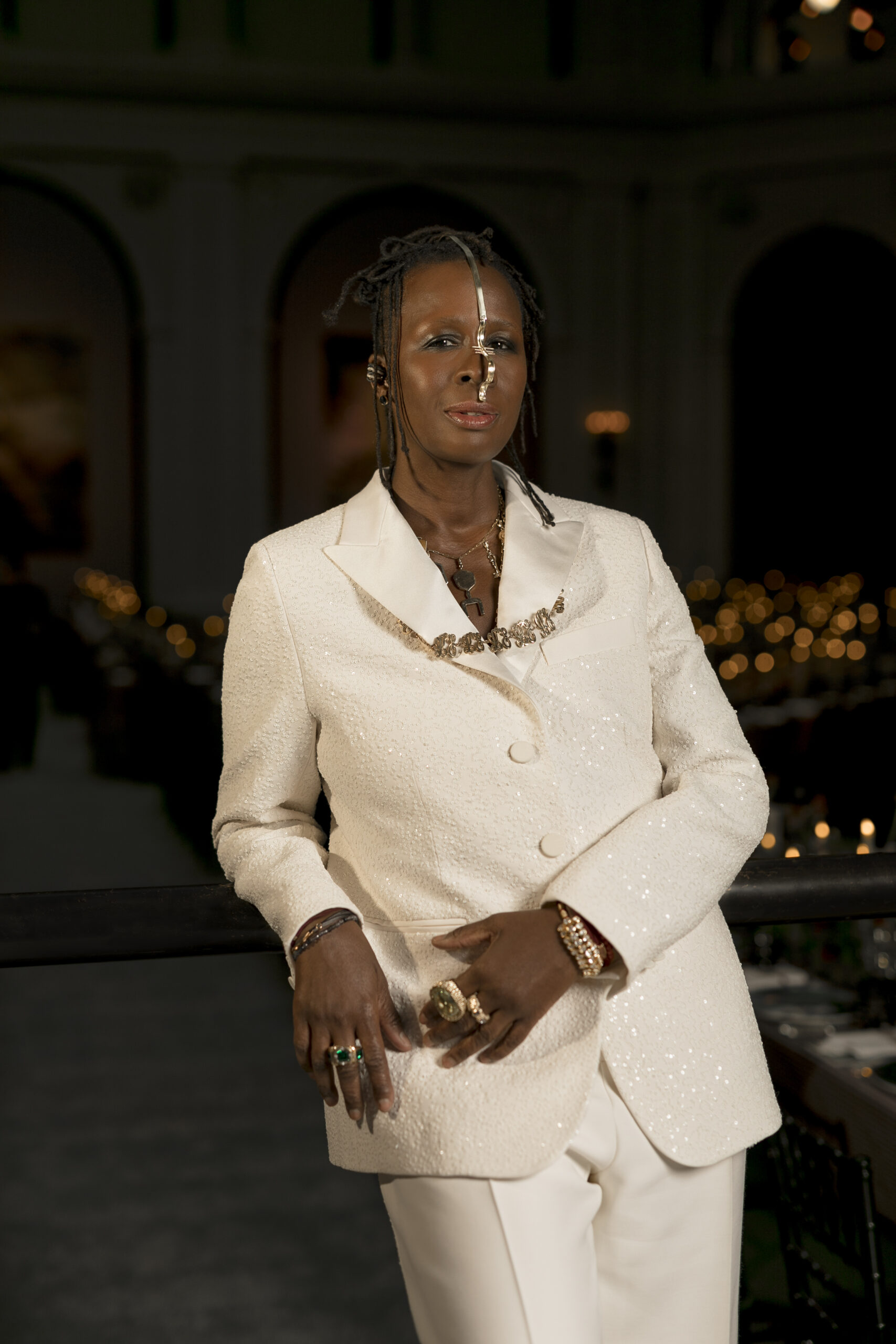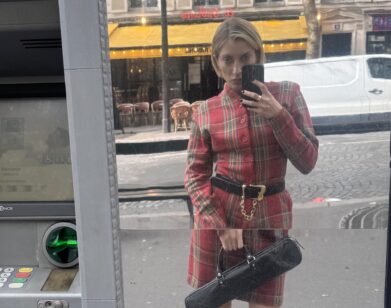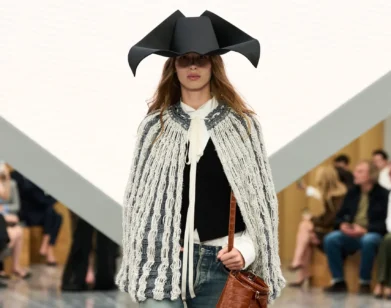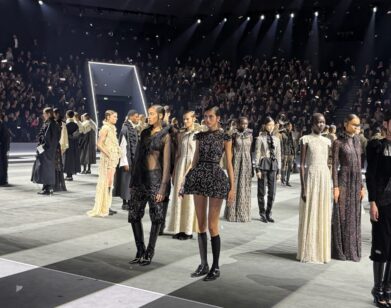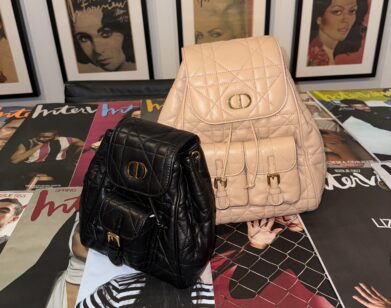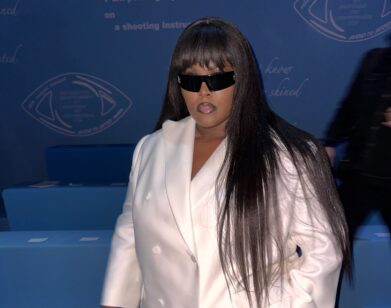ICON
Mickalene Thomas on Monet, Mentorship, and Maria Grazia Chiuri
Mickalene Thomas has had a busy week. It started with the Brooklyn Artist’s Ball, where the painter and collage portraitist collaborated with Dior to reimagine the Brooklyn Museum’s Beaux-Arts Court, selecting table settings and decor inspired by the work of Carrie Mae Weems. A few days later, Thomas co-hosted the People’s Ball at the Brooklyn Public Library, where she helped fête the event’s five honorees, including tenant organizer Aura Mejia and Harlem fashion icon Dapper Dan. A firm believer in the virtues of collaboration and community, it’s no wonder Thomas spent her week getting dressed up to celebrate the achievements of her fellow artists and Brooklynites. “If you’re not willing to bring people with you and just share your success,” she told Interview, “you’re not really creating impact or inspiring.” As she unwinded from the festivities, Thomas caught up with us to talk about her ongoing partnership with Dior and a recent exhibition that puts her work in conversation with Claude Monet.
———
JAKE NEVINS: Hi, Mickalene. How was your weekend?
MICKALENE THOMAS: My weekend was fabulous.
NEVINS: Oh, yeah?
THOMAS: Yeah. It’s just been a great week. Yesterday, I hosted The People’s Ball that happens every year at the Brooklyn Library, which is fabulous. Even though it was torrential rain, it was still a fabulous crowd of people and they really showed up and showed out. They came with their really expressive, innovative costumes and outfits and I think everyone’s just really in the mood to just celebrate and have joy.
NEVINS: The library is just down the block from me. I heard Dapper Dan was honored!
THOMAS: I appended his award on him! He dropped some beautiful verses about the people and the community. He’s just always an incredible treat to be around. And the fact that he came all the way from Harlem to Brooklyn, that was really great.
NEVINS: And earlier in the week you were at another ball, the Brooklyn Artists Ball.
THOMAS: Yes, exactly. It’s just like, bring it. One of the main highlights, first and foremost, was Carrie Mae Weems, the fact that she was being honored. She’s been a friend and mentor for many years, so to have the opportunity to celebrate her in this capacity was just beyond my wildest imagination. But also just listening to her speech, she just has that way of speaking truth in ways that may be otherwise difficult and challenging for people to hear. And even though she’s just bringing up conversations around George Floyd and Black Lives Matter and about the adversity of Black women and what we’re going through, she has a way of saying it and delivering it that lands so well to your ears and makes you want to be inspired to do something. You know what I mean? And then to top it off with the phenomenal performance by Celeste from London was just… I mean, it was just one of the best vocals that I’ve heard in a long time.
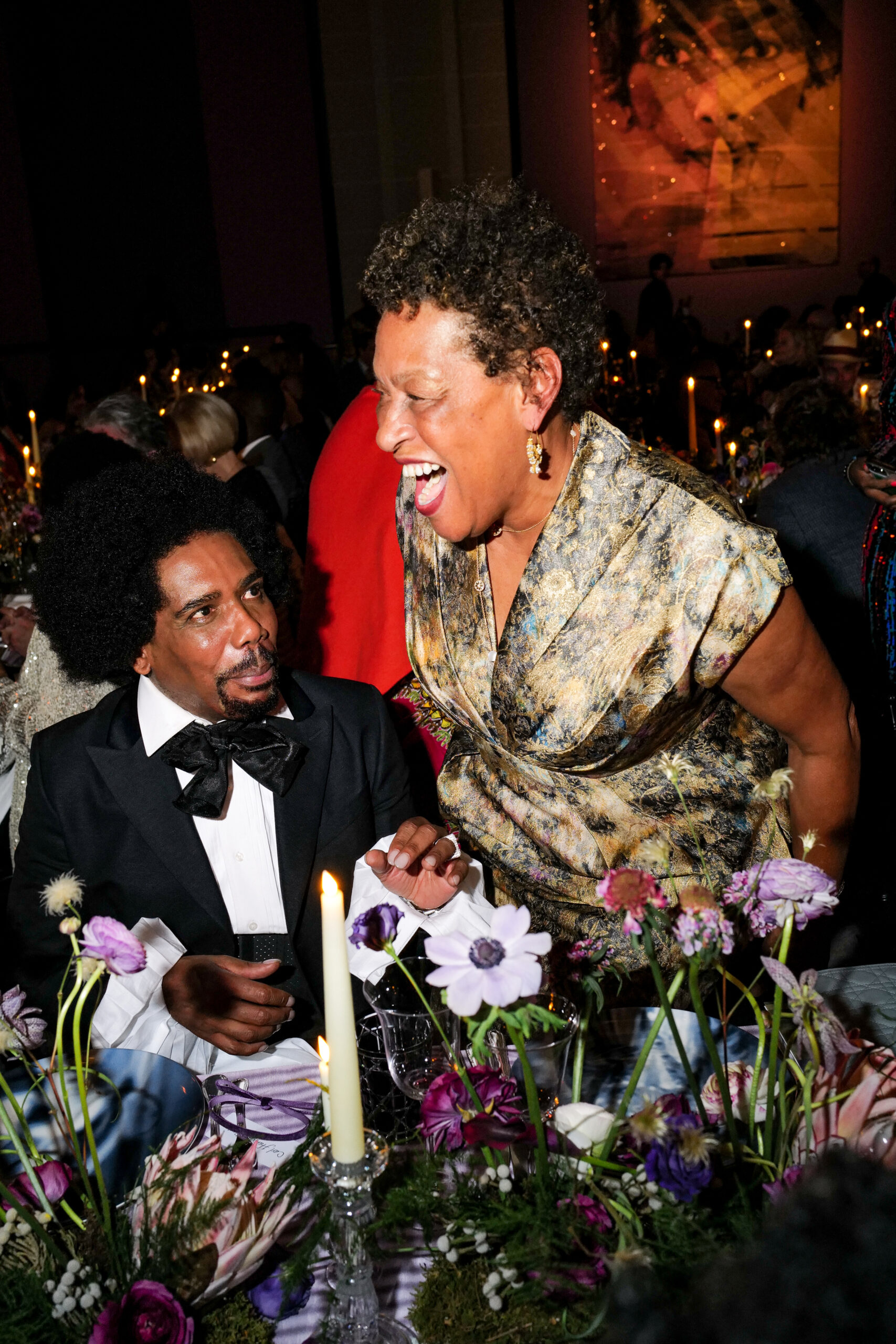
Carrie Mae Weems at the Brooklyn Artists Ball, photographed by Ben Rosser. Artwork: Noir est beau (Helen Williams)
NEVINS: Wow. That’s high praise.
THOMAS: Yeah, she was just a natural. She basically didn’t need any instrumental support. And then my work being installed, which was in collaboration with Dior, to have it come back to Brooklyn for people to experience was just a really wonderful and warm feeling. Those would be my three highlights of the evening.
NEVINS: I know it’s not your first time working with Dior. Tell me about that ongoing partnership.
THOMAS: It’s so serendipitous, one of those things where you have two creatives that just kind of click and work well together and have a lot of respect for one another. I think my first involvement was just back in 2016 doing the Lady Dior bag. I was a little apprehensive at first because I wasn’t really in the frame of mind of collaborating with corporations or brands. But I went ahead and took that leap of faith and it came just through conversation of really meeting Olivier [Bialobos]. And I think it’s testament to his vision with Dior and also the artists that he works with, like Maria Grazia Chiuri. Oftentimes I’m approached with these brands and they really don’t want to support the artists in the ways they should. Dior has always given me that platform and respect as an artist. I’ve never felt like I was being taken advantage of. I felt like I had a seat at the table and my input landed well. Then Maria Grazia invited me to participate with the Cruise line in 2018 in Morocco, reinterpreting the Bar jacket, which was a lot of fun. But aside from actual collaborations, they’ve also been just really great supporters of my creative practice outside of branding. They’ve supported and sponsored my show at the Bass [Better Nights], they support and sponsor other shows. And so they just come on board saying, “We believe in what you’re doing and we want to be a part of that.”
NEVINS: That’s wonderful. And, as you said, it’s not always the case when a large corporation works with a fine artist. How did they alleviate your concerns about what such a partnership might entail?
THOMAS: I feel like it’s a full, well-rounded investment. It’s not just these one-offs, we want to just do this and we are walking away. They’re always interested in, “Okay, what are your plans? What are you doing for the future? What are your goals? How can we support? How can we help you achieve those things?” Even so much with Maria Grazia [Chiuri], when we were doing this project with the Brooklyn Museum, she wanted to have the conversation with myself and Carrie Mae Weems for Harper’s Bazaar, this full dialogue, three different artists, intergenerational, talking about our vision and our creative paths. And now this collaboration has also forged a new friendship between Dior and Carrie Mae Weems. Do you know what I mean? They’re also interested in her practice and learning from her. That just makes me feel really happy that dialogue is starting between two other artists. I think as you evolve and grow as an artist, if you’re not willing to bring people with you and just share your success, then I mean, you’re not really creating impact or inspiring.
NEVINS: Well, on the subject of other artists, I know you were selected to do the scenography for Dior’s 2023 couture show, and you outfitted the space with portraits of 13 Black women who’ve influenced you. What was that like and how did you choose them?
THOMAS: Exactly. It was such a treat, first of all, to be approached for that particular project to do the scenographic for the show. First it was like, “What do you mean? What are you talking about? You want me to do what?” Because one, it was in Paris. Two, my relationship with Paris, and also my relationship with the mentors that I look to in iconic women like Josephine Baker, Diane Carroll, all of these women who have gone to Paris. Paris was really a launchpad for many of their careers. I knew right away what I wanted to do. This was a platform and opportunity to really put forth the contributions of Black women. So once I presented that to Dior, it was just like, “Yes, let’s do it.” There was no pushback. And one of the reasons why I chose all of these specific women is because they all were a collective community and Josephine Baker really made sure that whenever anyone came to Paris, she supported and welcomed all of these women into her home. For me, it was really profound that they had that support system. And that’s why I had her at the center, as sort of the mother of them all. So I just wanted to really put that forth and present these women in their own separate fields.
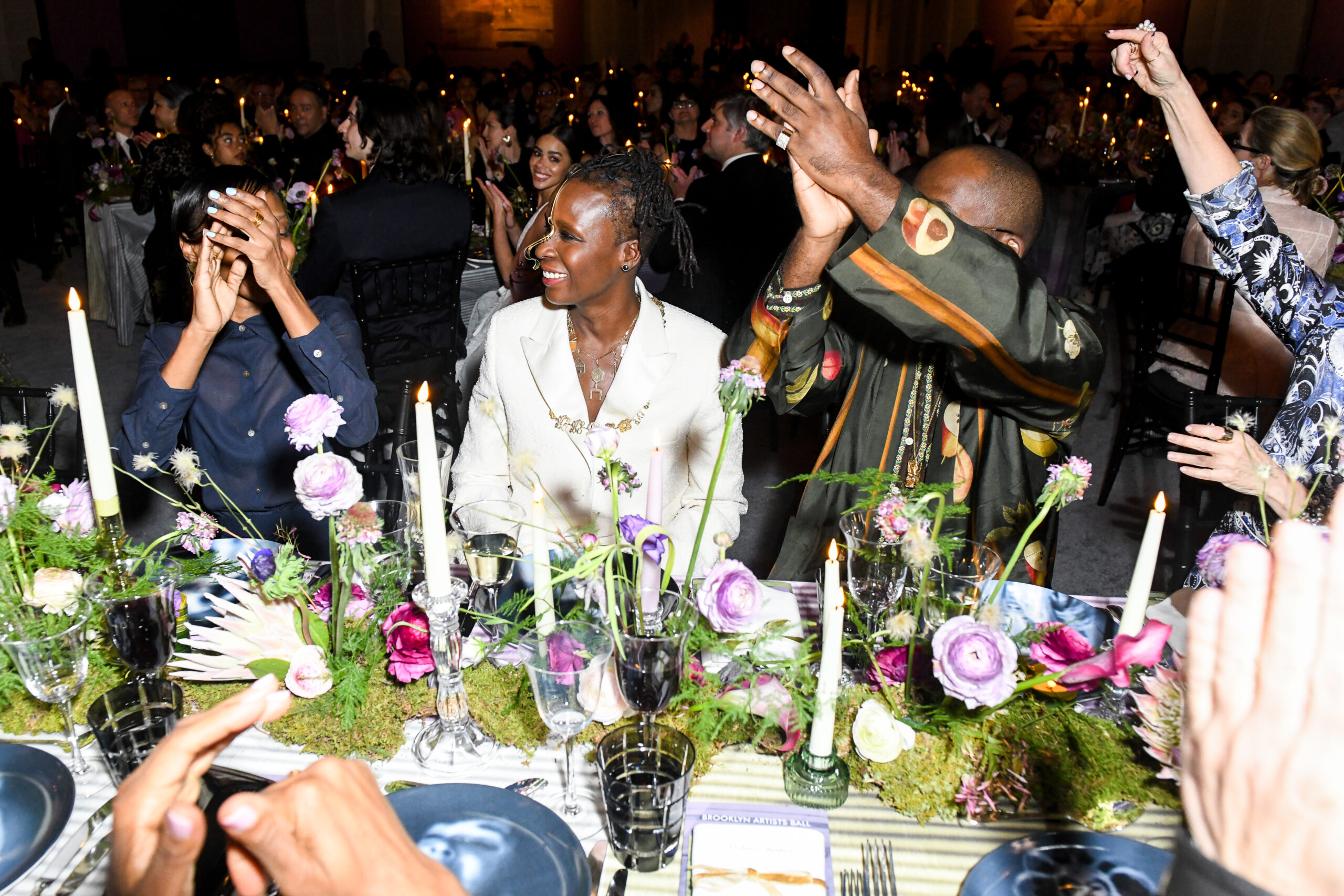
Mickalene Thomas at the Brooklyn Artists Ball, photographed by Joe Schildhorn. Artwork: Noir est beau (Lena Horne) and Noir est beau (Josephine Premice)
NEVINS: It’s very cool you got the chance to honor that. Speaking of Paris, you very recently were exhibited there in a show called Mickalene Thomas: Avec Monet. What was it like to be put in conversation with the canon so directly, a canon that’s historically been quite dismissive of women artists and especially women of color?
THOMAS: Yes. For me, thinking about the history and the discourse around the western canon, if I have the opportunity to subvert and shift and change the conversation as an artist, then I’m going to do that and I’m going to take that challenge on. You know what I mean?
NEVINS: Right.
THOMAS: And for me, having the experience and the privilege of being an artist to take a residency at Monet’s estate in 2011 was a really eye-opener for me as to how an artist is able to create space for themselves. It was just like, “Okay, here I am, a Black woman, and I have an opportunity for people to look and think about Monet in a different way.” Where do I fit in as a Black woman, as a queer woman, as an artist, in this conversation? And so to me, yeah, I’m going to do this show. Why? Because I’m going to have my work in a space where people who otherwise would not get the opportunity to see the Black body in the nude, to see the Black body in this particular reclined landscape, to shift how people understand this notion of rest and relaxation with Black bodies. Because when you think about the reclined nude, it’s a luxury to just recline. That’s a state of desire, right? We seldom see Black people in these positions. We seldom witness them in this elevated state. That was very important to take on, to use this platform to help shift the notions of how one may think of the Black body in this particular context.
NEVINS: Yes. It reminds me a bit of that show at The Frick, Queer Views and Old Masters, where young artists like Doron Langberg or Toyin Ojih Odutola were shown alongside Holbein and Rembrandt.
THOMAS: Yes. I think it’s very important, even though there may be some political controversy. That’s what art is. Art is about challenging the viewer and challenging yourself.
NEVINS: Well, what a great note to end on. Thank you for taking the time, Mickalene.
THOMAS: Thank you. And I love that you’re in Brooklyn. I thought you were calling in from Manhattan, so that made me even more excited.
NEVINS: Ha, yes. It was a pleasure.
THOMAS: Yes, you too. Thank you.

